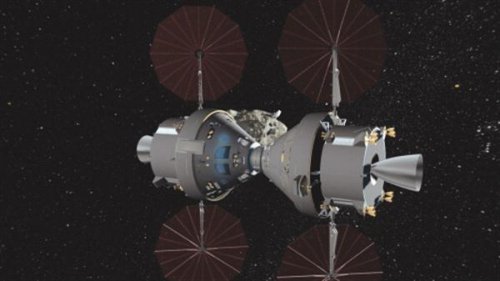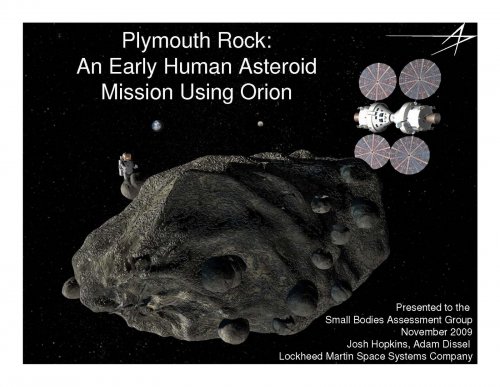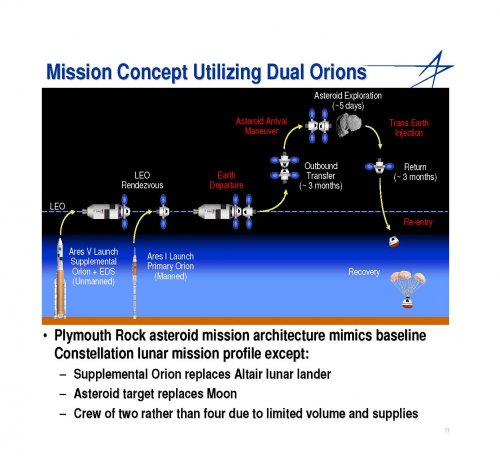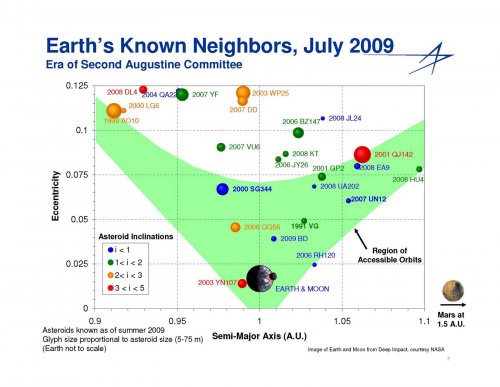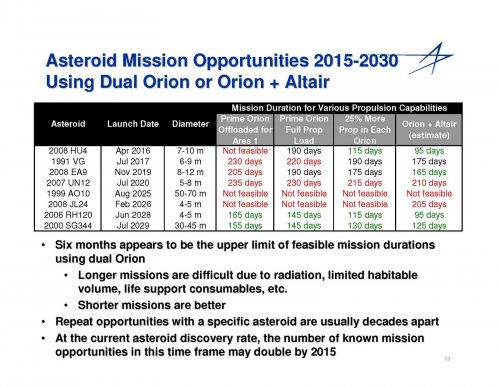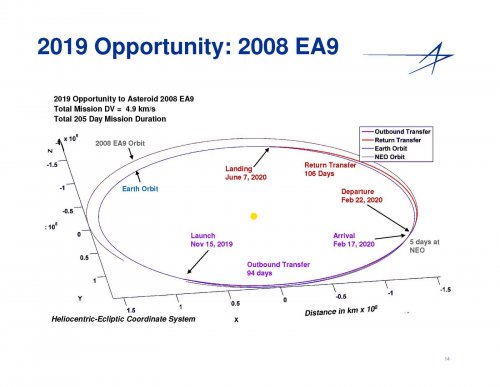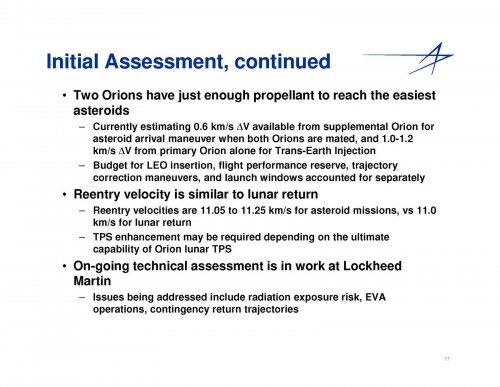In November 2009, Lockheed Martin proposed an unsolicited near-Earth asteroid rendezvous mission named "Plymouth Rock" to NASA. "Plymouth Rock" proposes sending a crew of two astronauts, in the 2020-25 time-frame, using two docked Orion spacecraft or a docked Orion and Altair spacecraft. This mission is intended to give NASA additional manned spaceflight experience that can be applied to a future manned Mars mission. "Plymouth Rock" was entirely funded internally at Lockheed Martin and was not part of Project Constellation.
Hopkins, Josh and Dissel, Adam. Plymouth Rock: An Early Human Asteroid Mission
Lockheed Martin Space Systems Company November 2009
URL: http://www.lockheedmartin.com/data/assets/ssc/Orion/Toolkit/PlymouthRockasteroidmissionNov2009.pdf
Hopkins, Josh and Dissel, Adam. Plymouth Rock: An Early Human Asteroid Mission
Lockheed Martin Space Systems Company November 2009
URL: http://www.lockheedmartin.com/data/assets/ssc/Orion/Toolkit/PlymouthRockasteroidmissionNov2009.pdf

